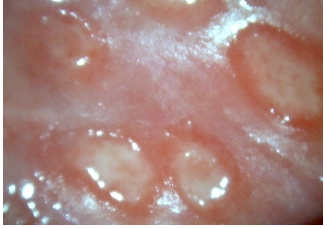Check out today’s Step 2 CK Qmax Question Challenge.
Know the answer? Post it in the comments below! Don’t forget to check back for an update with the correct answer and explanation (we’ll post it in the comments section below).
 An 82-year-old man with hypertension, hypercholesterolemia, and chronic obstructive pulmonary disease presents to the emergency department with severe back pain. He also feels diaphoretic and nauseous. The patient states he is usually compliant with his medications but sometimes forgets to take them. He denies any alcohol use or illicit drug use. His temperature is 37.1°C (98.7°F), blood pressure is 165/104 mm Hg, pulse is 112/min, respiratory rate is 18/min, and oxygen saturation is 94%. On physical examination there is no jugular venous distension, and there are diminished but equal pulses bilaterally in the lower extremities. Cardiovascular examination reveals regular rate and rhythm without murmurs, rubs, or gallops. Because the patient has an allergy to CT contrast dye, an MRI of the chest is performed and is shown in the image below.
An 82-year-old man with hypertension, hypercholesterolemia, and chronic obstructive pulmonary disease presents to the emergency department with severe back pain. He also feels diaphoretic and nauseous. The patient states he is usually compliant with his medications but sometimes forgets to take them. He denies any alcohol use or illicit drug use. His temperature is 37.1°C (98.7°F), blood pressure is 165/104 mm Hg, pulse is 112/min, respiratory rate is 18/min, and oxygen saturation is 94%. On physical examination there is no jugular venous distension, and there are diminished but equal pulses bilaterally in the lower extremities. Cardiovascular examination reveals regular rate and rhythm without murmurs, rubs, or gallops. Because the patient has an allergy to CT contrast dye, an MRI of the chest is performed and is shown in the image below.
Which of the following is the most likely diagnosis?
A. Aortic dissection
B. Lumbar disc herniation
C. Pancreatic cancer
D. Perforated peptic ulcer
E. Ruptured aortic aneurysm
———————–
Want to know the ‘bottom line?’ Purchase a USMLE-Rx Subscription and get many more features, more questions, and passages from First Aid, including images, references, and other facts relevant to this question.
This practice question is an actual question from the USMLE-Rx Step 2 CK test bank. Get more Step 2 CK study help at USMLE-Rx.com.




A
A
A
A. Aortic dissection
True & False lumen, aortic dissection
A; double lumen on imaging
A
A
A
The correct answer is A. An aortic dissection occurs when there is a tear in the aortic intima that forms a false lumen for blood to flow through. Patients typically present with acute onset chest pain and/or back pain that is characteristically “tearing” in nature. The pain may radiate as the dissection enlarges. Risk factors for aortic dissection include hypertension, as seen in this patient who may not be compliant with his medications. Although the gold standard for diagnosis of aortic dissection is an angiogram, CT with intravenous contrast, MRI, or transesophageal echocardiography may show a pseudolumen that aids in the diagnosis. In the image the pseudolumen can be seen in the descending portion of the aortic arch.
B is not correct. Lumbar disc herniation involves extrusion of the intervertebral disc and compression of the nerve roots with resultant lower back and lower extremity pain. These patients may have decreased lower extremity reflexes and weakness of their lower extremities. However, a diagnosis of lumbar disc herniation is not likely in this patient because it would not explain the diminished pulses in the lower extremities. Aortic dissection is more likely than lumbar disc herniation.
C is not correct. Pancreatic cancer is a chronic process that does not typically present with acute onset “tearing” back pain and normal laboratory values. Pancreatic cancer in the head of the pancreas is often associated with painless jaundice, weight loss, pruritus, acholic stools, dark urine, and abdominal pain. This patient’s history, physical examination, laboratory findings, and radiographic findings are more suggestive of an aortic dissection than pancreatic cancer.
D is not correct. Perforated peptic ulcer typically presents with sudden onset abdominal pain; however, it is not associated with decreased pulses in the lower extremities bilaterally. Although patients with perforated peptic ulcers may present with back pain, the history, laboratory findings, physical examination, and radiographic findings are more supportive of a diagnosis of aortic dissection than of perforated peptic ulcer.
E is not correct. Abdominal aortic aneurysms (AAAs) may be asymptomatic or may present with back or abdominal pain. Risk factors for AAA include hypertension, atherosclerosis, male gender, advanced age, and smoking. A ruptured AAA typically presents with a triad of abdominal pain, hypotension, and a pulsatile abdominal mass. Because this patient is hypertensive and does not show any indication of an AAA or rupture (retroperitoneal hematoma), this diagnosis is less likely than a diagnosis of aortic dissection.
A